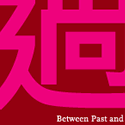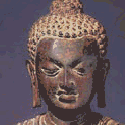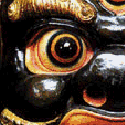|
|
| Show All 47 Results (Text Only) |
|
| Attitudes Towards Nature in Daoist Art |
|
|
Lesson plan that helps students understand the difference between how many Westerners view nature versus how many Chinese (particularly Daoists and the literati) felt about the natural world around them. Uses Chinese poems and landscape paintings as primary sources.
Go to Museum Resource: http://asiasociety.org/education-learning/resources-schools/elementary-lesson-p... | |
|
|
|
| Between Past and Future: New Photography and Video from China |
|
|
Online presentation of a 2004 exhibition that takes "a comprehensive look at the innovative photo and video art produced since the mid-1990s in China." Featured topics: History and Memory; Reimagining the Body; People and Places; and Performing the Self.
Go to Museum Resource: http://sites.asiasociety.org/arts/past_future/index.html | |
|
|
| Buddhist Art and the Trade Routes |
|
|
An extensive site, covering three main topics: 1) Trade Routes; 2) Buddhism and its Imagery; and 3) India: Origins of Buddhist Art. Also discusses the Buddhist art of specific regions -- Korea/Japan; China/Mongolia; Himalayas; Southeast Asia; and Sri Lanka. With maps, images, a glossary of terms, and bibliography.
Go to Museum Resource: http://www.asiasocietymuseum.org/buddhist_trade/index.html | |
|
|
| Can We Feed Ourselves? A Focus on Asia, Photographs by Hiroji Kubota |
|
|
The Japanese photojournalist Hiroji Kubota's project to produce a book of photographs documenting Asia from the perspective of food. With introductory text and a portfolio of 25 color photographs taken throughout Asia. With accompanying text.
Go to Museum Resource: http://sites.asiasociety.org/arts/kubota/ | |
|
|
| Creating a Japanese Screen |
|
|
Lesson plan that introduces the idea that art is made to enhance our surroundings and also that the choices made about them reflect something about the person choosing. Uses two Japanese folding screens -- one from the Edo and the other from the Muromachi period -- as primary sources.
Go to Museum Resource: http://sites.asiasociety.org/education/AsianArt/lessons.japanese.htm | |
|
|
|
| Dancing Demons: Ceremonial Masks of Mongolia |
|
|
Online presentation of a 2000 exhibition on the masks, costumes, and paraphernalia used in the Tsam and Maidari religious festivals of Mongolia. Both festivals are related to Tibetan Buddhism. The site itself does not include many images of masks, but has useful background information on the land and people of Mongolia, Tibetan Buddhism, and the Tsam and Maidari festivals.
Go to Museum Resource: http://sites.asiasociety.org/arts/mongolia/ | |
|
|
|
| Show All 47 Results (Text Only) |








